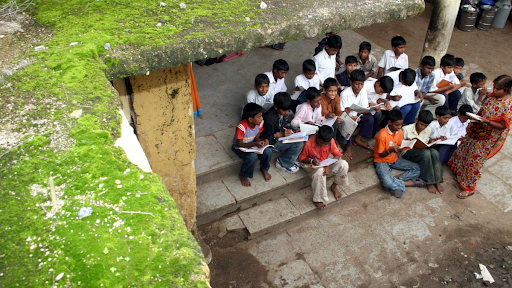



The SRS 2021 report shows Tamil Nadu, Delhi, and Kerala have birth rates declining twice as fast as the national average due to better education, healthcare, and economic development. This leads to an aging population, shrinking workforce, and potential political and economic shifts, especially in southern Indian states.

Copyright infringement not intended
Picture Courtesy: THE HINDU
Sample Registration System (SRS) Statistical Report 2021 reveals faster birth rate decline in Tamil Nadu, Delhi, and Kerala compared to national average.
Indian population dynamics are shifting, and the Sample Registration System (SRS) Statistical Report 2021, released by the Registrar General of India, under Home Ministry, highlights a unique trend.
Declining Birth Rates
The SRS 2021 report measures the crude birth rate (CBR), which is the number of live births per 1,000 people in a population each year.
Nationally, India’s CBR in 2021 stood at 19.3, meaning 19.3 babies were born for every 1,000 people. From 2016 to 2021, this rate dropped by 1.12% annually. However, Tamil Nadu, Delhi, and Kerala saw much steeper declines:
These declines are double the national rate, indicating a rapid reduction in births. However, states like Rajasthan (0.48%), Bihar (0.86%), and Uttar Pradesh (1.09%) saw much slower declines, meaning their populations are growing faster.
Uttarakhand was the only state where the birth rate increased during this period.
The report also notes that 13 large states and union territories, including all southern states (Tamil Nadu, Kerala, Andhra Pradesh, Telangana, Karnataka), Maharashtra, Gujarat, Odisha, Himachal Pradesh, Haryana, and Jammu and Kashmir, experienced faster-than-average declines in birth rates.
Total Fertility Rate (TFR)
Total Fertility Rate (TFR), which estimates the average number of children a woman will have in her lifetime.
India’s TFR in 2021 was 2.0, just below the replacement level of 2.1 (the rate needed to maintain a stable population without migration). However:
Gross Reproduction Rate (GRR)
The Gross Reproduction Rate (GRR), which measures the average number of daughters a woman will have who survive to reproductive age, was 1.0 nationally. In Bihar (1.4), Uttar Pradesh (1.3), Rajasthan (1.2), and Madhya Pradesh (1.2), the GRR was higher, indicating more daughters surviving to have children. West Bengal’s GRR was only 0.7, reflecting very low fertility.
Education, Especially for Women
Higher literacy rates among women correlate with lower fertility.
In Kerala, female illiteracy is only 0.7%, compared to 26.8% in Bihar. Educated women delay marriage, prioritize careers, and choose to have fewer children.
Tamil Nadu and Delhi also have high female literacy and education levels, empowering women to make informed reproductive choices.
Access to Healthcare and Family Planning
Southern states have good healthcare systems and effective family planning programs.
Since the 1950s, the National Family Planning Program has provided contraceptives and counseling, with southern states like Tamil Nadu and Kerala implementing these strictly.
Better maternal and child health services reduce infant mortality, encouraging couples to have fewer children.
Economic and Social Development
Higher per capita income, urbanization, and women’s workforce participation in Tamil Nadu, Delhi, and Kerala reduce the desire for large families.
Urban areas, like Delhi, have lower TFRs (1.6 nationally for urban women v/s 2.2 for rural women).
Economic pressures, such as the high cost of raising children, also discourage large families.
Cultural Shifts
In southern states, cultural norms have shifted toward smaller families. Early marriage is less common, and women have more control over reproductive decisions.
Northern states like Bihar and Uttar Pradesh favor larger families due to traditional values, and women often lack decision making power over reproductive decisions.
Aging Population
Lower TFRs mean fewer young people and a growing elderly population. By 2036, 19% of Andhra Pradesh’s population will be over 60, and Tamil Nadu and Kerala face similar trends. This increases the dependency ratio (the proportion of non-working elderly to working-age people), straining healthcare and pension systems.
Shrinking Workforce
A smaller working-age population (15-59 years) reduces economic productivity. Southern states, already facing labor shortages, may depend on migration from northern states with younger populations. Kerala estimates 60 lakh migrant workers by 2030, about one-sixth of its population.
Political Representation
The upcoming delimitation of parliamentary seats after the 2026 Census will use population data. Southern states with declining populations may lose seats, while northern states like Uttar Pradesh and Bihar gain seats, shifting political power northward.
Economic Challenges
Less workers mean lower tax revenues and economic growth. Southern states, despite higher human development, face economic stagnation if fertility rates don’t stabilize.
Must Read Articles:
India's Declining Fertility Rate: Impact & Implications
Source:
|
PRACTICE QUESTION Q. Examine how India’s demographic dividend can act as a catalyst for achieving sustained economic growth. What structural reforms are necessary to fully harness this potential? 150 words |






© 2026 iasgyan. All right reserved